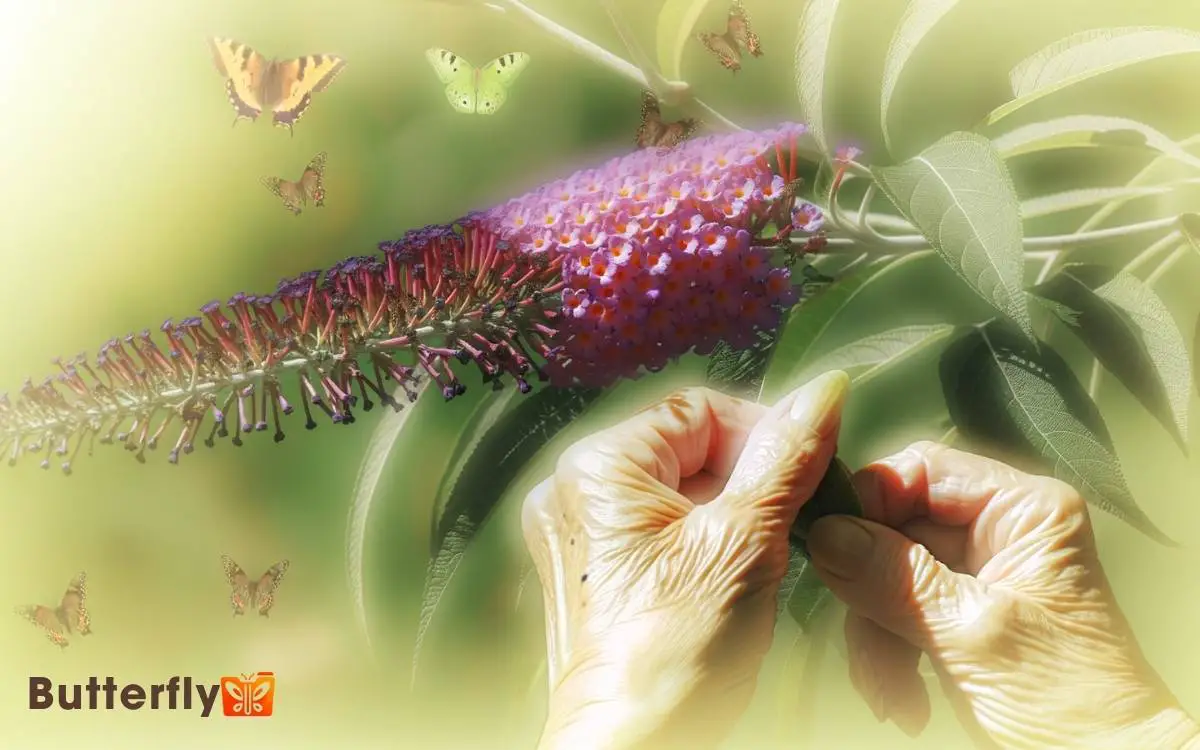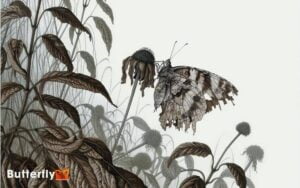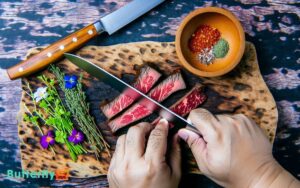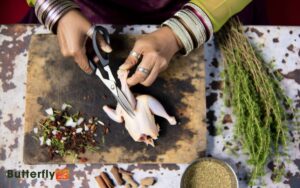How To Get Seeds From A Butterfly Bush? Simple Techniques!
To get seeds from a butterfly bush, start by monitoring the flowering cycle. Wait until the flowers have withered and the seed pods are brown and dry.
Use clean, sharp pruning shears to cut the pods, then store them in a dry, cool place. Spread the seeds on a paper towel in a well-ventilated area at 70-80°F to dry.
Once dry, store them in airtight containers with silica gel packets in a cool, dark place around 40°F. Label the containers with the collection date and species. For successful planting tips and further details, continue on.

Key Takeaways
Choosing the Right Time
When should you harvest seeds from a butterfly bush to guarantee maximum viability and growth? Timing is important. You need to observe the flowering cycle carefully. Wait until the flowers have fully bloomed and started to wither. This usually occurs in late summer to early fall.
Look for seed pods that are brown and dry, as these indicate that the seeds inside have matured. Harvesting too early can result in underdeveloped seeds that won’t germinate effectively. Using a sharp, clean tool, cut the seed pods from the plant.
Store them in a dry, cool place to make sure they retain their viability. By precisely timing your harvest, you’ll maximize the potential for robust and successful growth in future plantings.
Identifying Seed Pods
Examine the butterfly bush closely to identify seed pods, which are typically elongated, brown, and dry structures forming where flowers once bloomed. These pods hold the future potential of your butterfly bush garden.
To aid in identification, consider these characteristics:
- Shape: Seed pods are elongated and cylindrical, resembling miniature beans.
- Color: They transform from green to brown as they mature.
- Texture: Mature seed pods feel dry and brittle to the touch.
- Location: They develop in clusters at the ends of stems, exactly where flowers were.
Gathering Necessary Tools
To efficiently gather seeds from your butterfly bush, you’ll need essential gardening equipment like pruning shears and gloves.
Use clean, dry containers to collect and store the seeds, ensuring they remain viable for future planting. Proper preparation will make the seed collection process smooth and successful.
Essential Gardening Equipment
Before you start collecting seeds from your butterfly bush, it’s important to gather the essential gardening tools to guarantee a successful harvest. You’ll need precise and well-maintained equipment to make sure the seeds are collected efficiently and with minimal damage.
Here’s a list of must-have tools:
- Pruning Shears: Sharp and clean shears are essential for cutting seed pods without damaging the plant.
- Magnifying Glass: This helps you inspect the seeds closely, ensuring they’re mature and viable.
- Gardening Gloves: Protect your hands from potential irritants and ensure a firm grip while handling delicate parts.
- Paper Bags: These are excellent for temporarily storing the collected seed pods, allowing for proper drying and minimizing mold risk.
Using these tools will streamline your seed collection process.
Seed Collection Containers
After gathering your essential gardening tools, you’ll need to focus on selecting the right seed collection containers to guarantee the harvested seeds remain viable and uncontaminated.
Opt for breathable, natural materials like paper envelopes or cloth bags, which prevent moisture buildup and fungal growth. Avoid plastic containers, as they can trap humidity, safeguarding seed quality.
Label each container with the date and plant species for accurate tracking. For an innovative twist, consider using silica gel packets to maintain a dry environment within the containers.
Make sure containers are stored in a cool, dark place to prolong seed viability. By using these scientifically sound methods, you’ll maximize the success of your butterfly bush seed harvesting efforts, preserving each seed’s potential for future growth.
Harvesting Seed Pods
Carefully inspect the butterfly bush for mature seed pods that have turned brown and started to split open. This indicates that the seeds are ready for harvest.
Use the following steps to guarantee effective collection:
- Select a dry day: Harvesting on a day with low humidity reduces the risk of mold growth on the seeds.
- Gently remove pods: Using pruning shears, carefully clip the mature pods from the bush to avoid damaging adjacent foliage.
- Collect in a breathable container: Place the pods in a paper bag or mesh container to allow airflow and prevent moisture buildup.
- Label your collection: Mark the container with the date and plant variety to keep your seed stock organized.
Following these steps ensures you gather viable butterfly bush seeds efficiently.
Drying the Seeds
To guarantee your butterfly bush seeds are viable, you’ll need to start by harvesting the seed pods at the right time when they’re dry and brown. After collecting the pods, gently crush them to release the seeds and remove any chaff. Store the seeds in a cool, dry place until you’re ready to plant them, ensuring better germination rates. Once the seedlings are strong enough, you can follow the proper butterfly bush transplanting steps to help them establish in your garden successfully.
After harvesting, spread the seeds out in a single layer on a paper towel in a well-ventilated area to dry completely.
Proper storage techniques, such as using airtight containers, will help maintain seed viability until you’re ready to plant.
Proper Harvest Timing
Harvesting butterfly bush seeds at the right time is essential for ensuring their viability. It involves monitoring the seed pods until they turn brown and begin to split open.
Here’s how to do it effectively:
- Visual Inspection: Regularly check the pods for a change in color from green to brown.
- Touch Test: Gently squeeze the pods; they should feel dry and brittle.
- Natural Splitting: Wait until the pods start to split open naturally, indicating full maturity.
- Weather Consideration: Harvest on a dry day to prevent moisture from compromising seed quality.
Seed Storage Techniques
Once you’ve harvested the butterfly bush seeds, it’s important to dry them properly to guarantee their longevity and germination success. Begin by spreading the seeds in a single layer on a paper towel or a fine mesh screen.
Place them in a well-ventilated area away from direct sunlight. Make sure the temperature is consistent, ideally between 60-70°F (15-21°C). Allow the seeds to dry for about a week, turning them occasionally to prevent mold.
Here’s a quick reference table:
| Step | Details | Duration |
|---|---|---|
| Spread Seeds | Single layer on paper/mesh | Immediate |
| Ventilation | Well-ventilated area | Continuous |
| Temperature | 60-70°F (15-21°C) | Consistent |
| Drying Time | Turn seeds occasionally | 1 week |
Once dry, store them in an airtight container.
Extracting Seeds From Pods
After the butterfly bush flowers have faded and dried, carefully pinch the seed pods between your fingers to extract the tiny seeds contained within.
Here’s how to make sure you do it effectively:
- Select mature pods: Look for pods that have turned brown and feel dry to the touch.
- Gently open the pods: Use a gentle but firm grip, applying just enough pressure to split them without crushing the seeds.
- Collect the seeds: Once the pods are open, tap them over a container to collect the seeds. They’re very small, so work over a clean, flat surface.
- Inspect for quality: Discard any seeds that are discolored or damaged, focusing on those that appear healthy and uniform.
This method maximizes your yield and guarantees seed viability.
Cleaning the Seeds
To guarantee the seeds are free from debris and ready for storage or planting, start by gently sifting them through a fine mesh screen.
This will help separate seeds from any remaining pod fragments. Next, use a small brush to remove any additional particles clinging to the seeds.
Pay attention to the following aspects to ensure peak cleanliness:
| Step | Tool | Purpose |
|---|---|---|
| Sifting | Fine mesh | Remove large debris |
| Brushing | Small brush | Clean tiny particles |
| Inspecting | Magnifying glass | Check for impurities |
| Blowing | Air blower | Eliminate light debris |
| Final Check | Tweezers | Remove stubborn debris |
Storing the Seeds
To guarantee your butterfly bush seeds remain viable, you’ll need to dry them thoroughly using a well-ventilated area for about a week.
After drying, store the seeds in an airtight container in a cool, dark place to maintain their longevity.
Using these methods, you can optimize the seeds’ preservation and readiness for future planting.
Proper Drying Techniques
Guaranteeing butterfly bush seeds are adequately dried before storage is crucial for maintaining their viability and preventing mold growth.
Follow these steps to secure the best drying conditions:
- Harvest Timing: Collect seeds after the pods have turned brown and started to split, indicating maturity.
- Air Circulation: Spread seeds on a mesh screen or paper towel in a single layer, allowing air to circulate freely around them.
- Controlled Environment: Place the drying setup in a well-ventilated, dry area with low humidity and temperatures between 70-80°F (21-27°C).
- Monitoring: Check daily for dryness by gently pressing seeds; they should be hard and brittle.
Ideal Storage Conditions
Proper storage conditions are crucial for preserving the viability of butterfly bush seeds and preventing premature germination or decay.
First, make sure the seeds are completely dry, as residual moisture can lead to mold. Store them in airtight containers to maintain a stable, low-humidity environment. Use silica gel packets to further control humidity levels.
Keep the containers in a cool, dark place, ideally at a temperature around 40°F (4°C). Label each container with the date of collection and the species.
For long-term storage, consider refrigeration, but avoid freezing as it can damage the seeds’ cellular structure. Regularly check the seeds for signs of decay or moisture buildup, ensuring they remain viable until you’re ready to plant.
Labeling and Dating Seeds
Consistently labeling and dating your butterfly bush seeds guarantees you can track their viability and origin with precision. This meticulous approach is crucial for maintaining a robust seed bank and ensuring successful future plantings.
Here’s how to do it effectively:
- Use Waterproof Labels: Choose durable, waterproof labels to prevent smudging or fading over time.
- Include Key Information: Write the plant species, collection date, and location of harvest. For example, ‘Buddleja davidii, 09/15/2023, Backyard.’
- Seal Seeds in Airtight Containers: Place labeled seeds in airtight jars or resealable bags to protect them from moisture and pests.
- Store in a Cool, Dark Place: Keep containers in a consistent, cool, dark environment to maximize seed longevity.
Following these steps ensures your butterfly bush seeds remain healthy and identifiable.
Planting Butterfly Bush Seeds
Sowing butterfly bush seeds involves selecting a well-drained, sunny location and preparing the soil to guarantee ideal germination and growth. Begin by loosening the soil to a depth of 12 inches and incorporating organic matter like compost to enhance fertility.
Butterfly bush seeds require light for germination, so scatter them on the soil’s surface and gently press them down without covering them with soil.
Maintain a consistent moisture level by misting the area lightly but avoid waterlogging. Germination typically occurs within 14-21 days if temperatures remain between 70-85°F.
Once seedlings have two to three sets of true leaves, thin them to ensure proper spacing, about 18-24 inches apart. This approach fosters robust growth and blooming.
Conclusion
Just like a chef meticulously collecting rare spices, you’ve harvested butterfly bush seeds with precision and care.
Remember, each tiny seed holds the potential to transform your garden into a vibrant haven for butterflies.
With proper storage and labeling, your seeds will be ready to plant when the time is right.
By following these steps, you’re not just gardening; you’re creating a cycle of life that will flutter through your garden for years to come.







продажа аккаунтов соцсетей купить аккаунт
продажа аккаунтов соцсетей безопасная сделка аккаунтов
площадка для продажи аккаунтов аккаунты с балансом
биржа аккаунтов магазин аккаунтов
заработок на аккаунтах услуги по продаже аккаунтов
маркетплейс аккаунтов биржа аккаунтов
безопасная сделка аккаунтов маркетплейс для реселлеров
Database of Accounts for Sale Secure Account Sales
Secure Account Sales Account Trading
Buy Account Account Acquisition
Purchase Ready-Made Accounts Find Accounts for Sale
Account Sale Website for Buying Accounts
Accounts market Purchase Ready-Made Accounts
Verified Accounts for Sale Accounts marketplace
Buy Pre-made Account https://socialmediaaccountsshop.com
Accounts marketplace Account Purchase
Account Market Social media account marketplace
Account Trading Platform Guaranteed Accounts
account selling service account trading platform
accounts for sale buy pre-made account
account exchange sell pre-made account
account trading buy account
secure account purchasing platform social media account marketplace
marketplace for ready-made accounts purchase ready-made accounts
account buying platform marketplace for ready-made accounts
social media account marketplace purchase ready-made accounts
purchase ready-made accounts account marketplace
online account store https://socialaccountsshop.com
account purchase purchase ready-made accounts
gaming account marketplace gaming account marketplace
social media account marketplace https://social-accounts.org
buy pre-made account website for selling accounts
sell pre-made account profitable account sales
sell account accounts for sale
accounts for sale social media account marketplace
buy accounts account trading platform
purchase ready-made accounts account trading
account exchange service gaming account marketplace
secure account sales account exchange service
accounts market gaming account marketplace
account trading service account catalog
social media account marketplace social media account marketplace
sell accounts account selling service
account store marketplace for ready-made accounts
account exchange service buy and sell accounts
website for selling accounts online account store